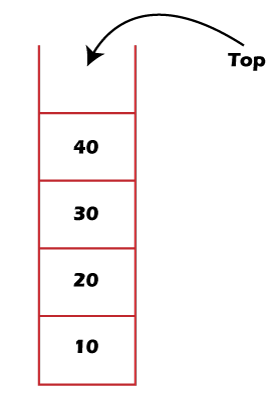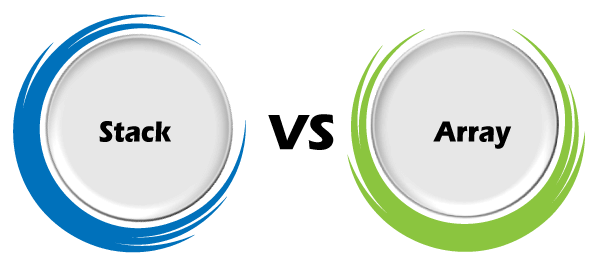Stack vs Array
Data structure is a way of organizing the data and storing the data in a prescribed format so that the data can be accessed and modified in an efficient manner. Data structure basically provides the logical representation to store the data so that the various operations can be performed on the data. There are multiple ways of storing and retrieving the data, but the stack and array are the two most common ways of storing the data. Although the stack can be implemented with the help of array but there is a difference between these two. The major difference is access.
Let's first understand both the data structures separately, then we will look at the differences between these two data structures.
What is Stack?
A stack is a linear list data structure having a sequential collection of elements in which elements are added on the top of the stack like piles of books, etc. The new item can be added, or existing item can be removed only from the top of the stack. Stack is considered as a dynamic data structure because the size of the stack can be changed at the run time. The two operations can be performed on the stack, i.e., push and pop. Here, push operation means that a new item is inserted into the stack, whereas the pop operation means that the existing item is removed from the stack. It strictly follows the LIFO (Last In First Out) principle in which the recently added item will be removed first, and the item which is added first will be removed last.
The representation of the stack is given below:

What is Array?
An array is a linear data structure that has the collection of elements of a similar data type. The size of the array is pre-decided and the location at which the values are stored is known as the index of value. It is a static data structure because the memory is allocated at the compile-time, and it is fixed throughout the program. It is one of the efficient ways to store multiple elements belonging to the same data type. It is used to store multiple values of the same type, and we can access them through indices. It provides random access where all the elements are stored linearly and accessed directly through the index.

Differences between Stack and Array

The following are the differences between the stack and array:
- Definition
Stack is a linear data structure that can be defined as a collection of items arranged in the form of piles of books. It is a sequential collection of elements and arranged in such a way that the elements can be added and removed only from one end, i.e., top of the stack. In contrast, an array is a random-access data structure used to store the multiple elements of similar data types to reduce the complexity of a program. In array, we can access any element directly through an index, and all the elements are stored one after another for efficient memory management.
- Data type
Stack is an abstract data type which is a sequential collection of objects that can store heterogeneous data. Here, heterogeneous data means that the data of various types can be stored in the stack. It is a limited-access data structure means that the element can be inserted or removed in a specific order. In other words, we can say that only top element of the stack can be accessed. In contrast, Array is a linear data structure that store homogeneous data. Homogeneous data means that data of a similar type can only be stored in the array. In array, access is not limited as we can access any element through indices.
- Working Principle
Stack is a linear data structure that follows LIFO (Last In First Out). The name LIFO itself suggests that the element which is added last will be removed first, or in other words, we can say that the element which is inserted first will be removed last. In contrast, in an array, any element can be accessed at any time irrespective of the order of elements.
- Size
The stack is a dynamic data structure means that size of the stack can grow or shrink at run time. In contrast, the size of the array is fixed, and it cannot be modified at run time.
Let's look at the differences between the Stack and Array in a tabular form.
| Array |
Stack |
| It is a data structure that consists of a collection of elements that are identified by their indexes, where the first index is available at index 0. |
It is an abstract data type that consists of a collection of elements that implements the LIFO (Last In First Out) principle. |
| It is a collection of elements of the same data type. |
It is a collection of elements of different data types. |
| It provides random-access, i.e., read and write operations would be performed to any element at any position through their indexes. |
As it implements LIFO so it has limited-access. We can access the only top element of the stack using push and pop operations. |
| It is rich in methods or operations like sorting, traversing, reverse, push, pop, etc. |
The limited operations can be performed on a stack like push, pop, peek, etc. |
| It is a data type. It is an abstract data type. |
| It is used when we know all the data to be processed and require constant changes at any element. |
It is good to use when there are dynamic processes. It is useful when we do not know how much data would be required. |
|



 For Videos Join Our Youtube Channel: Join Now
For Videos Join Our Youtube Channel: Join Now









